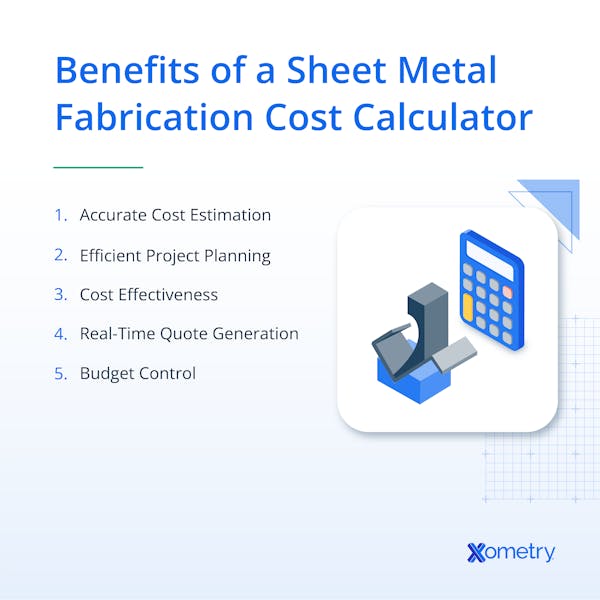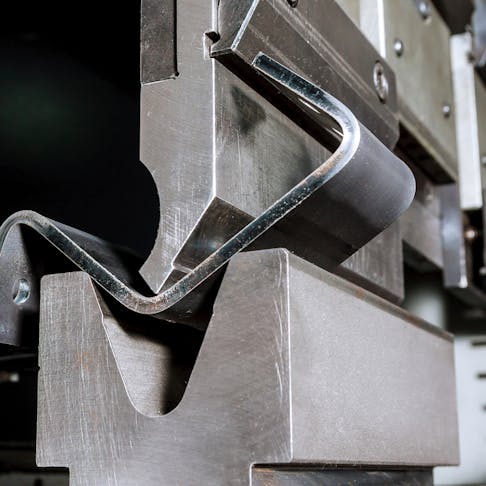Sheet metal fabrication is a great way to produce strong, precise parts, but costs can quickly add up if you’re not careful. That’s where a sheet metal fabrication cost calculator comes in. It helps you estimate all the costs before you even start, plan your budget effectively, and avoid any surprises along the way. Let’s see how it works and what factors come into play that add to the overall cost.
What is a Sheet Metal Fabrication Calculator?
A sheet metal fabrication cost calculator is a tool that helps estimate the total cost of a project based on material (type, thickness, finish), design, labor, production methods, and other important factors. By entering these key details into the calculator, you’ll be provided with a cost breakdown and get a clearer picture of what to expect.
Sheet Metal Fabrication Cost Calculator
Why Use One
The biggest perk of using a sheet metal fabrication cost calculator is that it puts you in control of your project. Instead of just guessing, you can make an accurate estimate that can help you avoid unexpected expenses, choose the best material for the task that’s within budget, and tweak the design too if need be.

Sheet Metal Fabricating Costs
Although the cost calculator will do most of the work for you, it’s good to know all the aspects of the sheet metal fabrication process that will impact the overall cost. We’ve listed them below.
Material: The choice of raw material, the type, and its thickness, grade, and finish will all affect the price. Some materials are much more expensive than others, as are those with a finer or more specialized finish.
Labor: Your project’s budget should also factor in skilled labor costs, wages, and any ops that are particularly labor-intensive as these will increase expenses. While it might have a higher upfront cost, automation can provide speed and efficiency, and ultimately save you a lot in labor costs. Something to think about, especially for mass production.
Production: The way parts are made also affects the total price. This includes setup time, machine operation, and how efficiently the process runs. More complicated designs, tight tolerances, and additional finishing steps all add up, so you’ll have to think long and hard about how necessary these are if you want to stick to a lower budget.
Tooling: Proper machine usage and avoiding excessive and unnecessary wear can help keep costs down. Effective tooling, i.e., using the right laser lens and nozzle for the specific material you’re working on and keeping on top of maintenance—like regular cleaning and alignment—will ensure you won’t have any unexpected costs down the line.
Overhead: In addition to direct production costs, there are other expenses like facility costs, utilities, equipment maintenance, and quality control that you’ll need to keep in check to stay on budget.
Outsourcing: Many times in sheet fabrication there will be jobs that need to be outsourced or subcontracted. While this can add to costs, it may still be more affordable than investing in specialized equipment or training in-house staff. The cost calculator can help you work this out.
FAQs on Sheet Metal Fabrication Costs
How can I save money on my sheet metal fabricating projects?
A big thing you can do to keep costs down in sheet metal fabrication is swapping out the material for a sufficient but more affordable alternative, and also one that’s easy to get a hold of. For instance, aluminum is cheaper than stainless steel, and mild steel is even more pocket-friendly. If you’re not after an extremely rust-resistant option, these are easy swaps in most instances. Using standard sheet sizes can also help, as custom options increase costs and waste.
Thicker materials will also take longer to cut and need more energy to do so. If your part doesn’t particularly need to be strong, a thinner material can keep costs to a minimum. Also, buying in bulk is often a discounted option that can keep the cost per part low. Using the machine as per the instructions, and performing regular maintenance to make sure it’s working as it should and not producing more wear than is necessary, will also help you keep things in check.
How can automation help keep costs low?
As well as reducing labor costs, automation—like robotic arms, conveyors, loading/unloading systems—can improve efficiency and minimize waste. These machines are quicker, don’t suffer from fatigue, can work around the clock, and offer higher consistency and better quality. Less rework is needed (if at all) and there are lower scrap rates—all benefits that contribute to minimizing costs, and a happy finance department.
How Xometry Can Help
Want to get started on your sheet metal fabrication project? You can upload your designs to the Xometry Instant Quoting Engine®!
Disclaimer
The content appearing on this webpage is for informational purposes only. Xometry makes no representation or warranty of any kind, be it expressed or implied, as to the accuracy, completeness, or validity of the information. Any performance parameters, geometric tolerances, specific design features, quality and types of materials, or processes should not be inferred to represent what will be delivered by third-party suppliers or manufacturers through Xometry’s network. Buyers seeking quotes for parts are responsible for defining the specific requirements for those parts. Please refer to our terms and conditions for more information.


